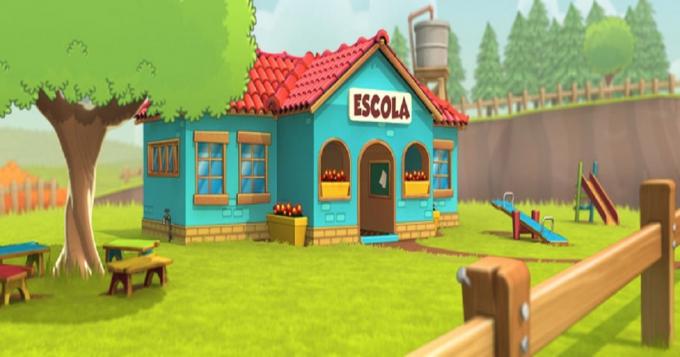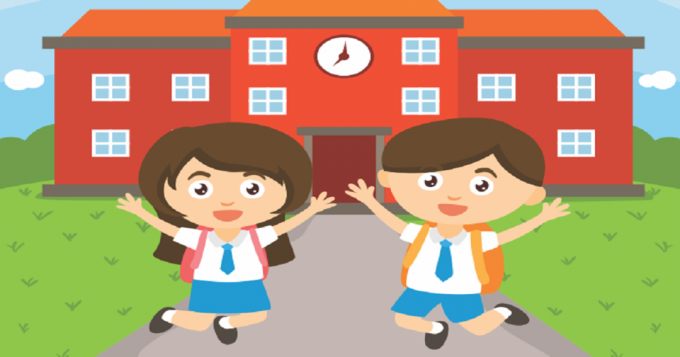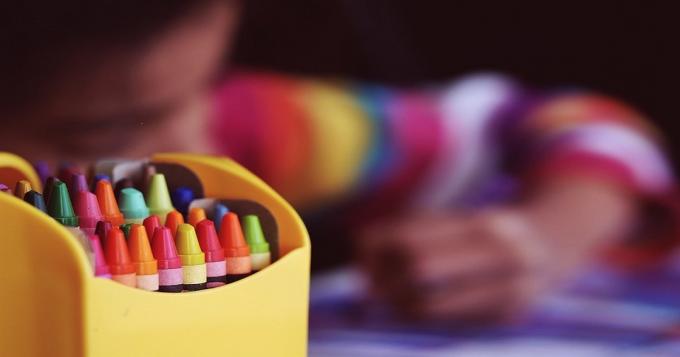
Check this post for some tips and suggestions for your School Day Lesson Plan, recommended for students of Kindergarten and Elementary Education.
Did you know that the school day is celebrated annually in the March 15th? That's right, this date celebrates one of the most important institutions for the educational formation of the population: the school.
See too:
It is at school that the individual learns and puts into practice several essential concepts to maintain a life in society. In addition, it is also at school that people begin to develop a critical sense, which is important for building a politicized and less alienated community.
And precisely because of this importance, we decided to share with you some tips and suggestions for your School Day Lesson Plan, Look:
Index
1st moment: Teacher, introduce the theme of the class by inviting students to follow the story: Monica's Gang- At school.
2nd moment: Explore the story with the students: In your perception, what is Mônica's expectation in relation to the school? How did Monica feel hearing from her mother that she would have to wait a little longer to get into school? When Mônica played at school, what image did she build of the school? Do you think that what happened in the Monica's Gang joke actually happens in the real school? Do you remember when you started school or have you ever heard someone tell about what this experience was like in your life?
3rd moment: After this exploration of the video, propose to the students the following reflection on the school where they study:
4th Moment: Teacher, ask students to record their answers to the questions on a separate sheet. At the time of socialization, record student information on the blackboard. Divide the class into trios and ask them to search online and printed materials for information about the school they attend.
5th Moment: After this initial exploration, ask students to structure an interview to be conducted with the school principal seeking key information about their school's history. If the school has old photos, please request a copy of such material for later use. Instruct students to make an interview report and file it in a folder.
6th moment: Assemble a panel in brown paper the size of a "billboard" or in the format of a "banner" with all the information about the school and copies of photos (if any) to be displayed later in an easy place access. It is suggested as a banner title: "The story of my school"
1st moment: Invite students to watch the video "The School - Paulo Freire"
2nd moment: Explore the video with students: What does the video portray? In your perception, is school a place for people? What “people” is Paulo Freire talking about? What did the author mean by “No island surrounded by people on all sides”? Who are the people who make up the your school? Do I have friends at the school I study? Is my school a place of happiness?
3rd moment: Propose a tour of the school so that students observe both the physical space and its functioning. Instruct students to record their main observations. If possible, ask students to photograph scenes and spaces that catch their attention.
4th Moment: Upon returning to the classroom, ask students to try to remember the spaces and scenes in the school that most marked them and to make illustrations through drawings.
5th Moment: Teacher, take different materials to the classroom for the construction of models of the school. Suggestion of some materials: styrofoam, popsicle stick, matchboxes, barbecue stick, glue, scissors, cardboard, crepe paper, cardboard, ink, marker pens, among others.
1st moment: Propose students to reflect on the your school history in which they study, from the following questions:
2nd moment: Invite students to know the lyrics of the song: “My school"– Baby Lilly
My School- Baby Lilly
"I go to school to learn to read, add, count and also write
I already know: 1 and 1 are two
The rest I learn later
Mommy, Mommy in my school I learned to write my name, spell Baby Lilly
And I also learned to be educated
I already say thank you and sorry
And in the cafeteria I take vitamins
What are good for boys and girls
I take care of the materials properly
For my books I have a lot of affection
Mom, Mom at school I learned
Saying the alphabet from A to Z
With affection for you a letter I wrote
In the end I sent Baby Lilly a kiss
And in the cafeteria I take vitamins
What are good for boys and girls
I take care of the materials properly
For my books I have a lot of affection
Mommy, Mommy in my school I learned
Writing my name, spelling out Baby Lilly
And I also learned to be educated
I already say thank you and sorry
Mom, Mom at school I learned
Saying the alphabet from A to Z
With affection for you a letter I wrote
In the end I sent Baby Lilly a kiss"
2nd moment: Propose students to draw a parallel between the lyrics of the song and their experience at the school where they study, based on the following question: What do I learn and learned at my school?
3rd moment: Propose to students that they make a memorial, similar to the photo album that parents usually assemble for their children when they are born, recording the main facts about the child's history through photos and written records. In this case, students may use photos that have been taken at school in specific activities, if have, or make drawings or illustrations with clippings from magazines representing important moments lived in their school.

School Day Lesson Plan
4th Moment: Organize together with the students an exhibition entitled "The history of my school and my history at this school", where the student's memorials will be presented, containing all the steps developed during the classes. Affix the banner to a mural in the exhibition space "The story of my school" and, if possible, make the videos available for visitors to watch. Invite the entire school community to visit the exhibition and see the work done.
Teacher the assessment must be continuous. Observe throughout the discussions if the students were able to recognize the school as a space for building knowledge and life history from the memory of situations experienced at school. Ask them to respond individually to the following question: In the text of Paulo Freire," The school", the author makes the following statement: "And the school will be better and better as each one behaves like a colleague, friend, brother."
Do you agree with this statement? If not, justify your answer. If yes, answer how is it possible to carry out what Paulo Freire said so that the school is better every day.
See too: March 15 – School Day: Text and Activities

School Day Activities

School Day Lesson Plan – Getting to Know My School
1st step:
2nd stage:
More in:67 ideas for School Day

School Day Lesson Plan – Me and my school
Because they belong to the first stage of elementary school, children in kindergarten may have greater difficulty in adaptation, so a whole lot of work is needed to make the child realize the real meaning of being at school, especially in the aspects of: making new friends (socialization) and discovering the different spaces in the school area, experiencing games and construction in them of knowledge.
In addition, at this first moment, it is important that the child gets to know their peers and themselves, that the educator know the potential and needs of each child and that the family feels safe with the institution of teaching. Thus, this project wants to promote the interaction between school/family, educator/student and student/student, in order to stimulate the development of feelings such as affection, love and respect for others both at home and at school.
Considering the adaptation period that takes place at school and that both the children, the school and the family are getting to know each other, this theme will be developed in order to try to identify and overcome the challenges, working on the child's affectivity and importance. of this feeling in family and school life, seeking in the interaction between both parties, a formation of children as beings citizens.
Provide children with greater knowledge about the school environment, respecting institutional rules and routines, as well as the individuality of each one within the school community.
Subscribe to our email list and receive interesting information and updates in your email inbox
Thanks for signing up.


